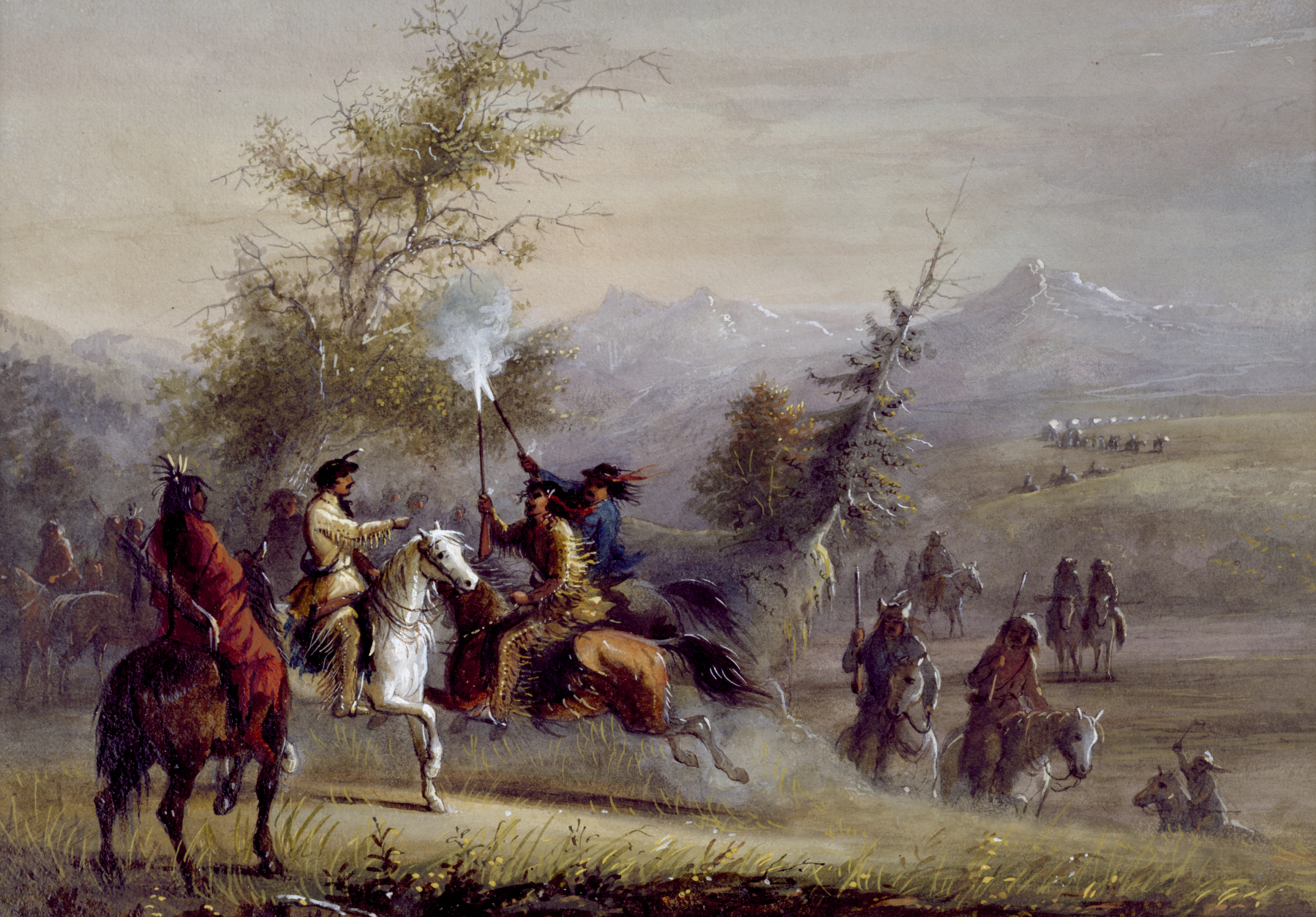The Greeting
(18th and 19th Centuries )
Extracts from Alfred Jacob Miller’s original text, which accompanied his images of Native Americans, are included below for reference. These words, which shaped how Miller’s contemporaries viewed the watercolors, reveal the racism and sexism embedded in 19th-century exploration and colonization of the western part of what is today the United States.
"In approaching our destination, one morning as we proceeded quietly along, our ears were saluted by sounds that raised the pulse immediately, and to which we had become sensitively alive. It was a tremendous Indian yell of a large body of men, and we heard the clattering of their horses as they came down the valley;- as soon however as we had sight of them, we were relieved;- it was a body of Trappers, who had heard of our approach and sallied forth to give us a greeting;- this is done by a feu de joie of blank cartridges and a hearty shaking of hands among the merry fellows;- for they found many of their comrades in our company, and when we encamped for the evening, our Captain gave them a grand Carouse in the shape of hump ribs, buffalo tongues, and mountain sheep. In addition to this, a metheglin, made of honey and alcohol, potent and fiery, was concocted and circulated among them." A.J. Miller, extracted from "The West of Alfred Jacob Miller" (1837).
In July 1858 William T. Walters commissioned 200 watercolors at twelve dollars apiece from Baltimore born artist Alfred Jacob Miller. These paintings were each accompanied by a descriptive text, and were delivered in installments over the next twenty-one months and ultimately were bound in three albums. Transcriptions of field-sketches drawn during the 1837 expedition that Miller had undertaken to the annual fur-trader's rendezvous in the Green River Valley (in what is now western Wyoming), these watercolors are a unique record of the closing years of the western fur trade.
Inscription
Provenance
Provenance (from the French provenir, 'to come from/forth') is the chronology of the ownership, custody, or location of a historical object. Learn more about provenance at the Walters.
William T. Walters, Baltimore, 1858-1860, by commission; Henry Walters, Baltimore, 1894, by inheritance; Walters Art Museum, 1931, by bequest.
Exhibitions
| 1988 | Alfred Jacob Miller: Maryland and the West. The Walters Art Gallery, Baltimore; Washington College, Chestertown; Frostburg State University, Frostburg; Jewish Community Center of Greater Washington, Rockville. |
| 1984 | Alfred Jacob Miller: Watercolors and Drawings. The Walters Art Gallery, Baltimore. |
Conservation
| Date | Description | Narrative |
|---|---|---|
| 12/1/1987 | Treatment | mounted |
Geographies
USA (Place of Origin)
Measurements
9 1/8 x 12 13/16 in. (23.2 x 32.6 cm)
Credit Line
Commissioned by William T. Walters, 1858-1860
Location in Museum
Not on view
Accession Number
In libraries, galleries, museums, and archives, an accession number is a unique identifier assigned to each object in the collection.
In libraries, galleries, museums, and archives, an accession number is a unique identifier assigned to each object in the collection.
37.1940.133



